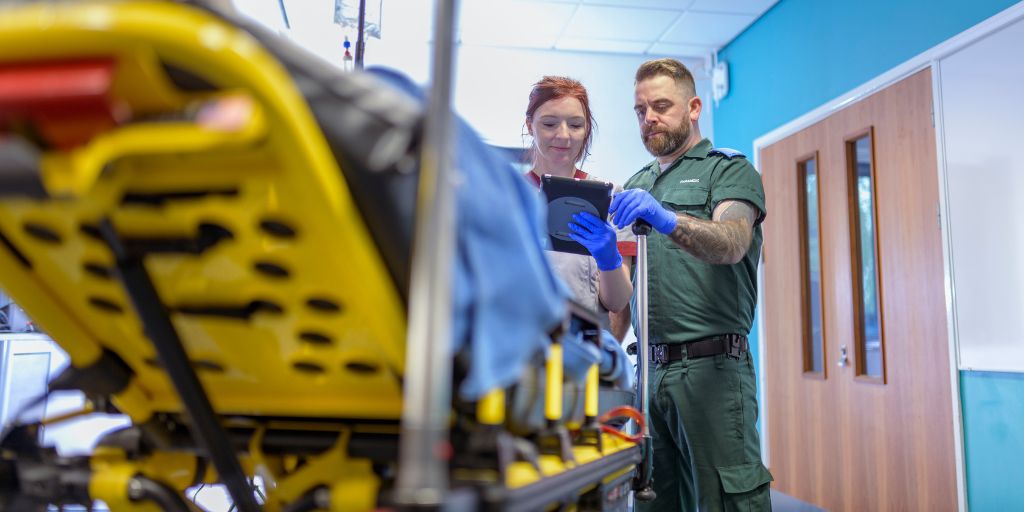
Nick Chorley, director, EMEA Public Safety & Security, Hexagon’s Safety, Infrastructure & Geospatial division
Keeping citizens safe requires a constant flow of information amongst a network of organisations from emergency call centres, fire brigades and police teams to hospitals and other public service providers – and often across multiple jurisdictions. Given the fast-paced and high-stakes nature of emergency situations, it is imperative that relevant data is shared quickly and easily, so that incidents can be dealt with effectively.
However, sharing this data with so many organisations is no easy task. The continuous flow of information from citizen calls for service, CCTV, emergency notifications and alerts, and other data sources can be overwhelming. For public safety teams to successfully improve collaboration, make decisions under pressure, and reduce overall response times, they need help sorting through this data to gain better insight during and after emergencies.
Breaking down silos
Historically, public safety agencies and other public service organisations have worked in data silos, with information from incidents informing their own jobs, but not necessarily empowering others. To improve collaboration, they need to allow better access to relevant information.
Achieving this can be challenging with legacy technologies, but cloud-based systems could play a vital role in addressing these issues and streamlining communication. Turning towards cloud-based models offers more accessibility to public safety teams who can easily share information with other organisations that need it. With the cloud, agencies can also decide exactly which files they want to share, who can access certain information and for how long, enabling them to maintain security.
In fact, cloud-based technology has seen incredible growth in recent years, with many police organisations implementing these systems. For example, The National Policing Digital Strategy 2020-2030, recognises that cloud infrastructures are essential to adopting emerging technologies that streamline processes. This strategy has encouraged UK police to embark on digital transformation journeys to improve the pace of interventions with data-driven insights and the Health sector is no different with NHS Digital’s A plan for digital health and social care.
Others, such as emergency dispatch centres, hospitals, and fire brigades could also benefit as cloud-based technology improves data-sharing and streamlines communication between teams. Moving resources to the cloud would therefore significantly improve emergency response times from end to end by improving access to relevant information required to prepare and respond to incidents.
Extracting intelligence from data
Migrating to the cloud is a great first step to ensure all organisations have access to the relevant information. However, this data also needs to be filtered and organised so that emergency responders aren’t overwhelmed with information that isn’t relevant or they are not privileged to see. Whilst it can be highly beneficial for control room operators to receive CCTV footage, photos, information about other incidents, and more in real time to get a more complete view of a situation, receiving so much data can quickly become a burden and complicate processes.
That’s where AI can help. For example, assistive AI can operate behind the scenes, reviewing data based on specific locations, types of incidents, weapons used, license plates, and other keywords. It can then make connections between data sets, which could otherwise be missed. Alerts can be set up with different priority levels and protocols. This means that personnel only receive relevant data which they can act on without being overwhelmed with other updates. By combining artificial and human intelligence in this way, response times can be vastly improved.
Data sharing and ownership
A key factor here is an understanding of data ownership and status. What can be shared and with whom? GDPR legislation plays a part as a control here with its sensible overrides when data is being shared in an emergency context. In short, it’s important to understand that an emergency service provider sharing data has a duty of care, both to the owner of the data and the recipient. Once shared, the information will also be treated with a higher and validated status than information received from the public – it’s important to share for a purpose and state the purpose rather than simply broadcast to all in case it might be interesting.
Looking to the future: dynamic digital integration
Public safety could be made much more efficient across the board with greater data sharing and collaboration using the cloud and AI tools. By integrating systems, agencies would have much better access to real-time information from the initial 999 call to dispatching response teams to any post-incident aftercare required.
When it comes to digital transformation in emergency response, there are clear next steps that need to be taken. Firstly, the cloud should be adopted across emergency services as this would allow greater accessibility to data. In addition, by utilising AI tools, teams would be able to process this information faster, extract intelligence, and quickly identify the next steps required. The upscaling of these technologies would lead to swifter, more efficient emergency responses – and improve safety for the general public.












